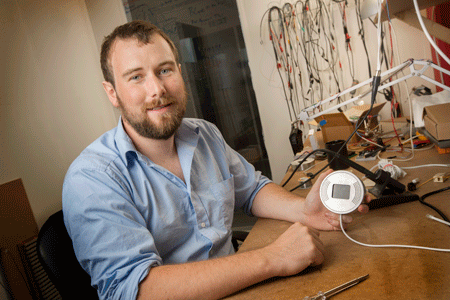Two DTU students saved both time and money in their start-up business—LeVego—when they tested a new CO2sensor before it was fully developed.
BSc students in electrical engineering Jakob Konradsen and his fellow student Noam Epstein were never in a moment’s doubt about ‘pretotyping’ their new product—a CO2 sensor to measure indoor climate in schools and kindergartens—prior to final develoopmentin the start-up company LeVego.
What is pretotyping?
Pretotyping is about testing your idea before spending time and money on expensive analyses and development. Whereas a prototype is an already existing product, a pretotype is a model or an outline used to test consumer interest in a given product. While it takes a long time to create a prototype, pretotyping can shorten the innovation process.
Testing at DTU Skylab
The two students brought a simple version of their sensor to DTU Skylab. Here, they explained to future customers that they had developed four different sensors. They then asked the test subjects to select the sensor of their choice given that they could have it installed free of charge.
“We were the ones who developed the clever idea, but it was customers who came up with ways of further developing the sensor. At the time, there was still a long way to go before final product development, but by pretotyping our sensor we confirmed the link between the sensor’s functions and were also able to discard certain ideas. “It didn’t cost us anything,” says Jakob Konradsen.

Sensor to strengthen learning environment
The development of the sensor has come a long way since then. In September, it will be tested in a primary and secondary school and two kindergartens. Here, the teachers will be able to use it to gain an overview of the level of CO2 in the classrooms and link the results with information about classes, classroom size, course subjects, season, and ventilation options. This will provide them with a good basis for improving the learning environment.
Article from DTUavisen No. 7, September 2014.